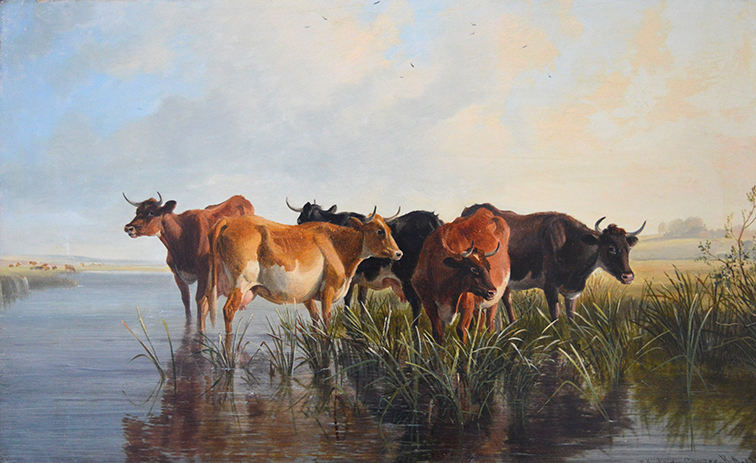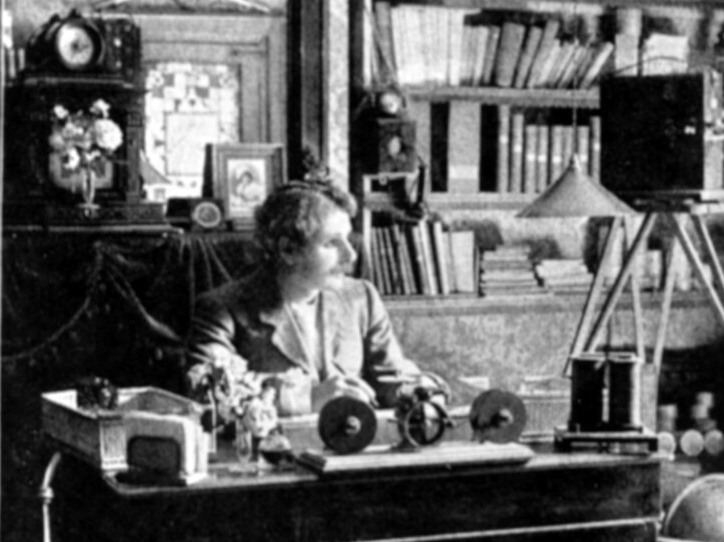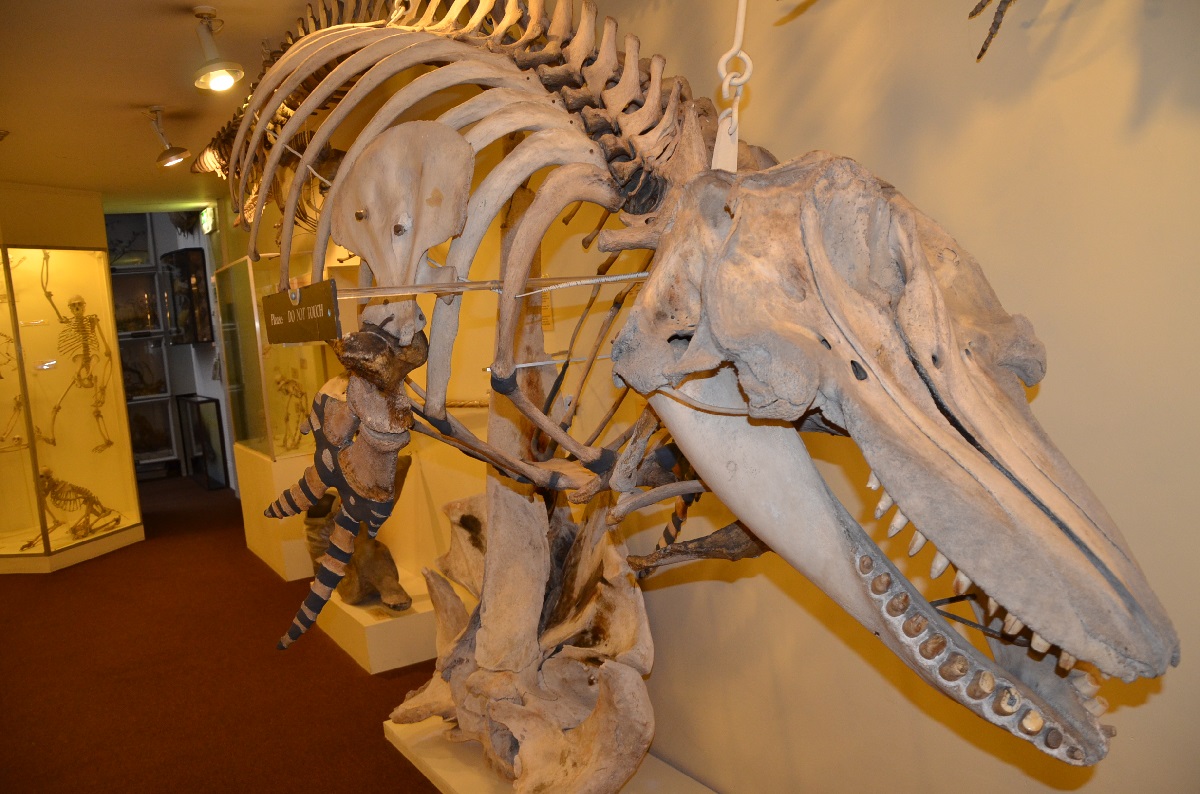Seizing the Moo-ment: the Return of ‘What’s in the Box?’

After a little hiatus, ‘What’s in the Box?’ at Hove Museum of Creativity has been reinstated. It is a regularly changing display which showcases objects from Brighton & Hove Museums’ stored collections.
Occasionally, collections staff do not exactly know what’s in a box until an audit or inventory is conducted. New insights into the collection are continually being discovered through this work, by external researchers, and other programming activity. It’s intended to share some of these discoveries with the public via these displays.
The objects currently displayed are all bovine related in some way or another. This is to time with ‘Moo: When the Cows come Home‘, an exhibition in neighbouring galleries of rarely seen paintings from the museum’s collection in which cows are the star attraction.
After cow-culating precisely what might fit the ‘What’s in the Box?’ display, staff overseeing the Decorative Art, World Art, Toy and Local History & Archaeology collections have pulled together an eclectic mix of objects for visitors to see.
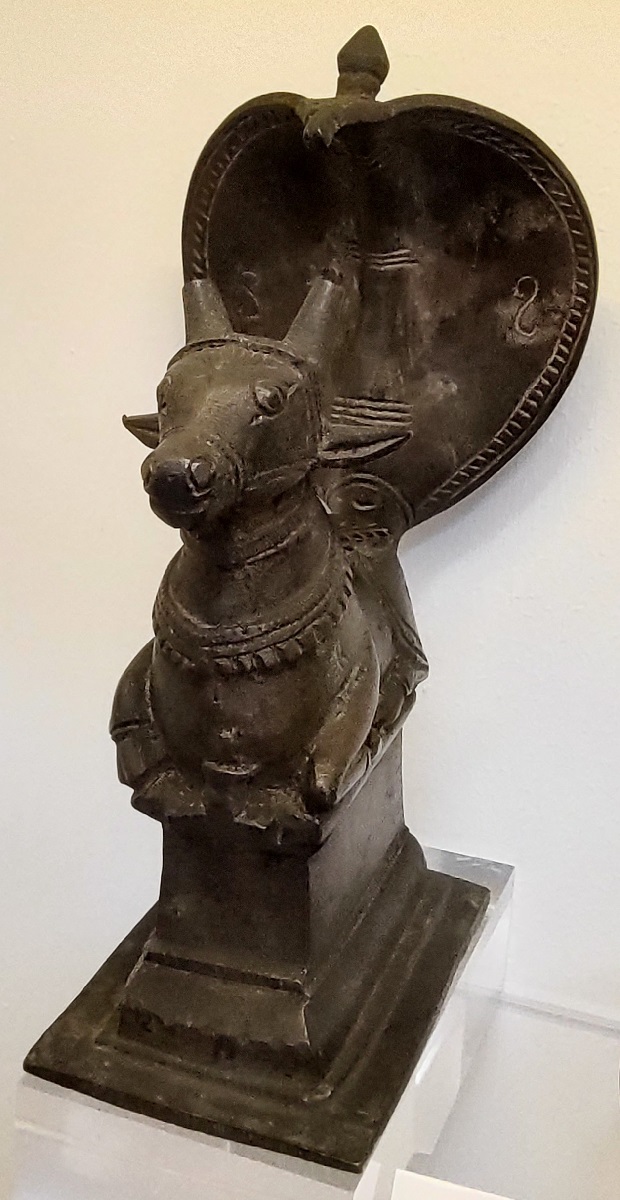
Moo Highlights
Box 2: Brass Nandi holding Lingam, Burma (Present Myanmar), Southeast Asia. Made before 1913 in Burma, Asia.
In Hinduism, the cow is the most revered of all animals and is considered sacred because it is a manifestation of Aditi, the mother of all gods and a symbol of the divine bounty of the earth. Cows are also associated with Lord Krishna, a major Hindu deity also known by the names Govinda and Gopala, which literally mean “friend and protector of cows”. Krishna grew up as a cow herder and is often depicted playing music amongst cows. The cow is also viewed as a symbol of compassion and generosity in Buddhism, and in parts of Africa cattle are seen as a source of pride and a symbol of prosperity.
Here we have a Recumbent Sacred Bull of Shiva, a brass figure seated on an oblong pedestal. The bull seems to be holding Lingam, an object that symbolizes the god Shiva which looks like a smooth cylindrical mass. Behind there is a one-headed detachable Naga. Sacred animals served as vahanas, or mounts for Hindu deities to travel on. Nandi is Shiva’s animal form, his means of transportation, and his most ardent worshipper.

Box 3: Tex McLeod (1889-1973) – Cowboy and Rodeo Star
Tex McLeod was born Alexander de Avilla McLeod in Texas in 1889. He ran away from home aged 12 and worked on cattle ranches across the southern USA and Mexico. Tex also spent time in vaudeville (travelling entertainment shows) including Buffalo Bill Cody’s Wild West Show.
Tex settled in Brighton in the 1950s. He often performed his rope tricks outside his home at 26 Tidy Street, entertaining neighbours and passersby. In later years his home became a boarding house for homeless men. In an altercation with one of his boarders, Tex suffered a heart attack from which he died aged 83. He is buried in the Lawn Memorial Cemetery in Woodingdean, Brighton.
This photographic print shows Tex McLeod saluting while on horseback at Pendleton, Oregon in 1915. Tex participated in the Pendelton Round-Up in its early years, a major annual rodeo which continues to this day.

Box 4: Milk Jug. Designed by ATP, c. 1986.
This box contains another peace-themed object. This earthenware jug is decorated with women’s faces, barbed wire and peace symbols. It is part of a tea service made for the donor who visited the Women’s Peace Camp at Greenham Common Air Base, Berkshire. The camp was formed to protest against the siting of Cruise missiles on UK soil.
The donor recalls the
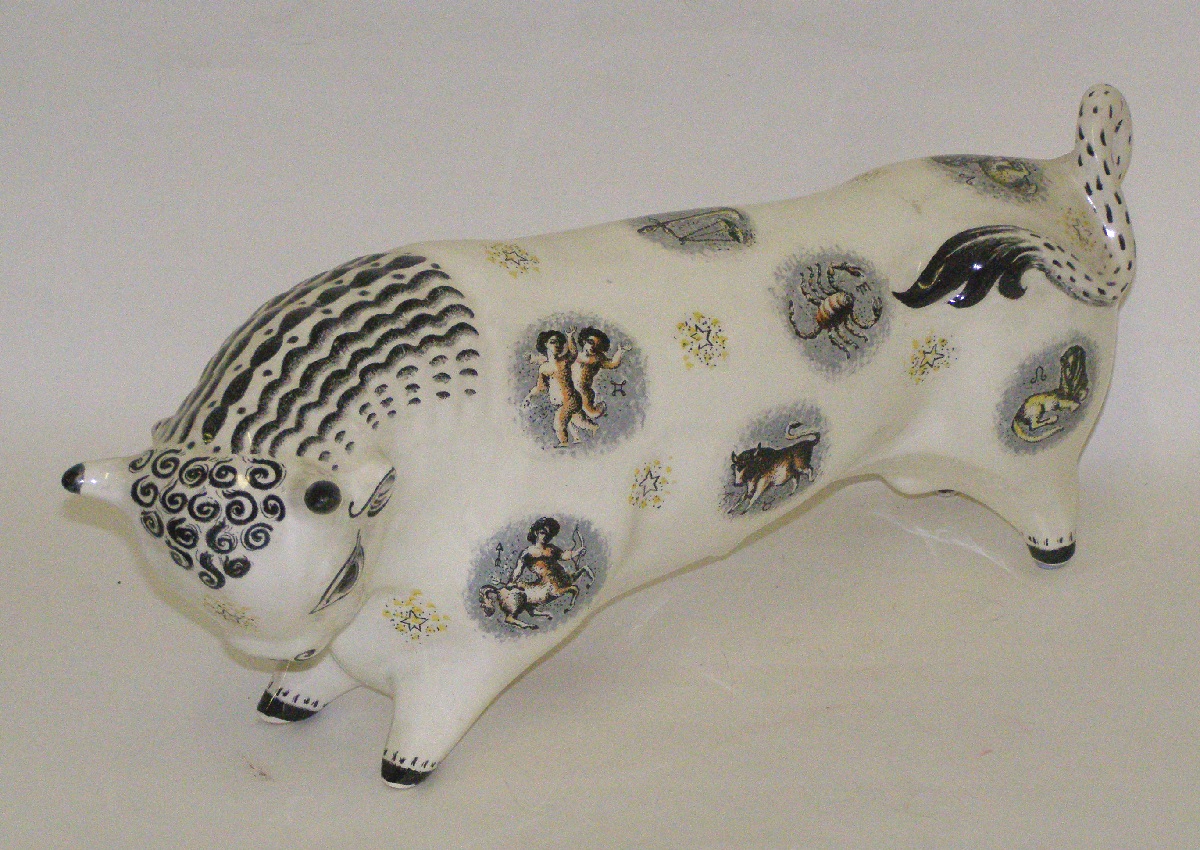
Box 5: Taurus the Bull, c.1945. Designed by Arnold Machin (1911-1999) for Josiah Wedgwood & Son, in Stoke-on-Trent.
This sturdy earthenware and steel bull is decorated with signs of the zodiac. It was designed by Arnold Machin (1911-1999) for Josiah Wedgwood & Son, in Stoke-on-Trent.
Artists Eric Ravilious and Eric Fraser have both been credited with creating the zodiac designs but Arnold Machin is now thought to be solely responsible.
Machin was a sculptor, designer and teacher. During World War Two, he campaigned for peace and spent a year in prison as a conscientious objector.
He is best known for his designs of Queen Elizabeth II on coins and postage stamps.
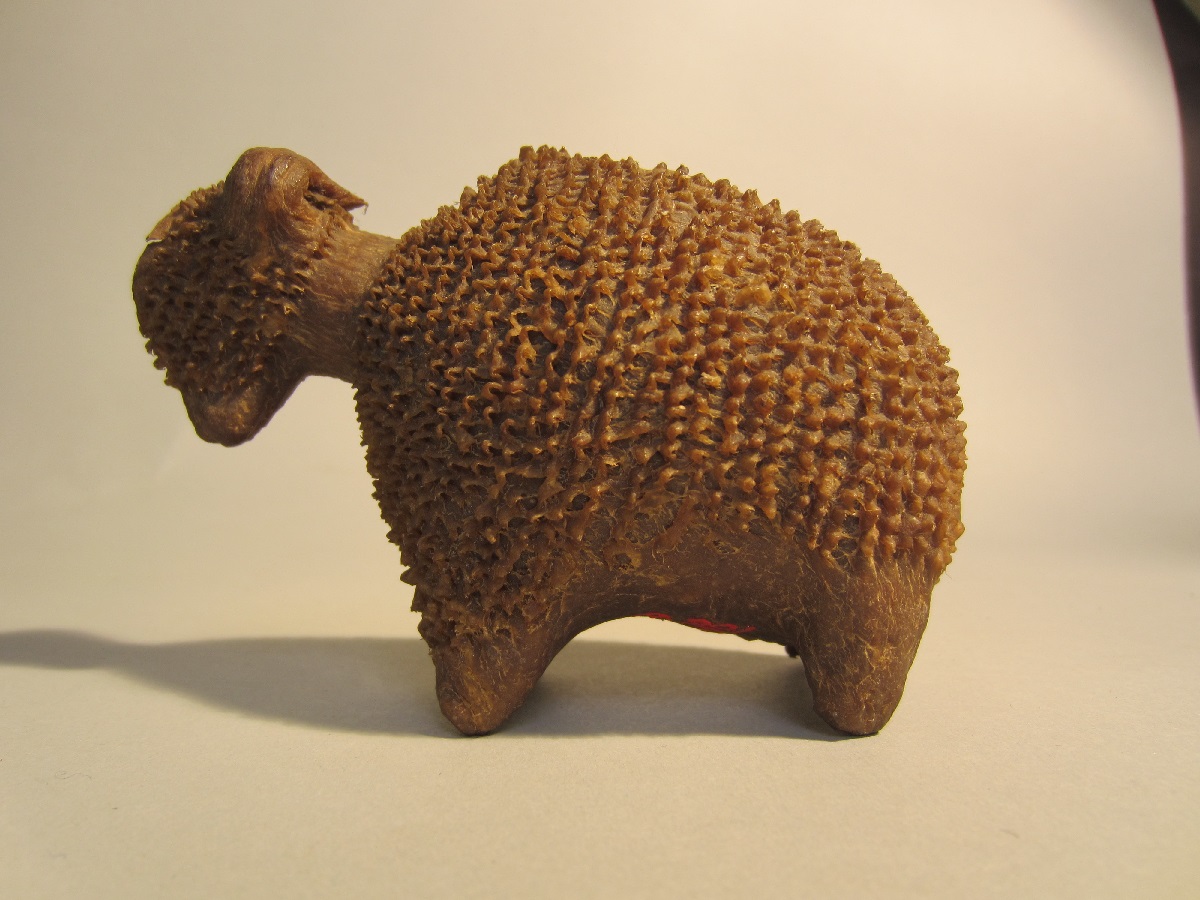
Box 6: Snuff container in form of animal figure, made of cow’s blood and serum, Southern Africa, Africa, Late 19th Century.
(please note: the following passage describes the killing and processing of a cow and its hide)
Small zoomorphic snuff container moulded into the form of a sheep and a quadruped animal with small hump on neck – possibly a cow or an ox.
Snuff is a powdered tobacco usually inhaled through the nose widely used in Africa since the Portuguese introduced it into southern Africa in the 1500s. The containers are made of scrapings of cow hide and blood forming a paste which is first placed over a clay model, the latter being broken up and removed from interior when paste has been hardened in the sun.
These snuffboxes are peculiar to the tribes of Southern Africa, both in shape and material. The containers are made using a clay model of some animal which is put it in the sun to dry. When a cow is killed the hide is removed and laid on the ground with the hair downwards. With a sharp blade the interior of the hide is scraped to clean off the coagulated blood which adheres to it, and contents are collected all in one place. This blood is then mixed with powdered earth forming a paste. This paste is then rubbed over the clay model and a few minutes in the burning sunshine suffice to harden it tolerably, and then a second coat is added.
This process is repeated until a coating about the twelfth of an inch in thickness is obtained. Just before it becomes quite hard, a very fine needle is used to raise a kind of coarse nap on the surface. When it is quite dry a round hole is cut to retrieve the whole of the clay model, leaving only the dry coating of paste. (Wood, John George. c1880. The natural history of man; 2 vols. New York: Home Book Company, p 174.)
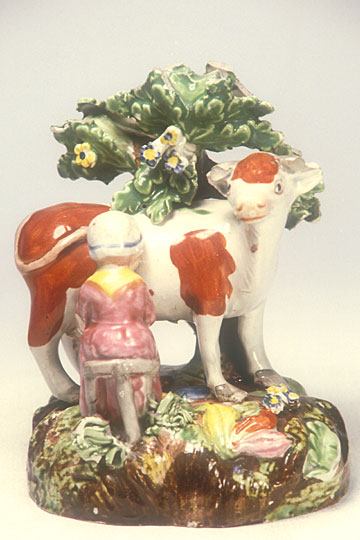
Box 11: Staffordshire Pearlware Figure Group, c1820
Here a woman milks a cow with a very happy expression on its face! They are by the tree, which is an example of Bocage. This is the delicate modelling of foliage, such as trees plants and flowers, in clay. It was often used by 19th century ceramicists to create idealised countryside scenes. As the industrial revolution turned fields into towns and factories, one theory is that these bocage pieces served as mementos of a disappearing way of life.
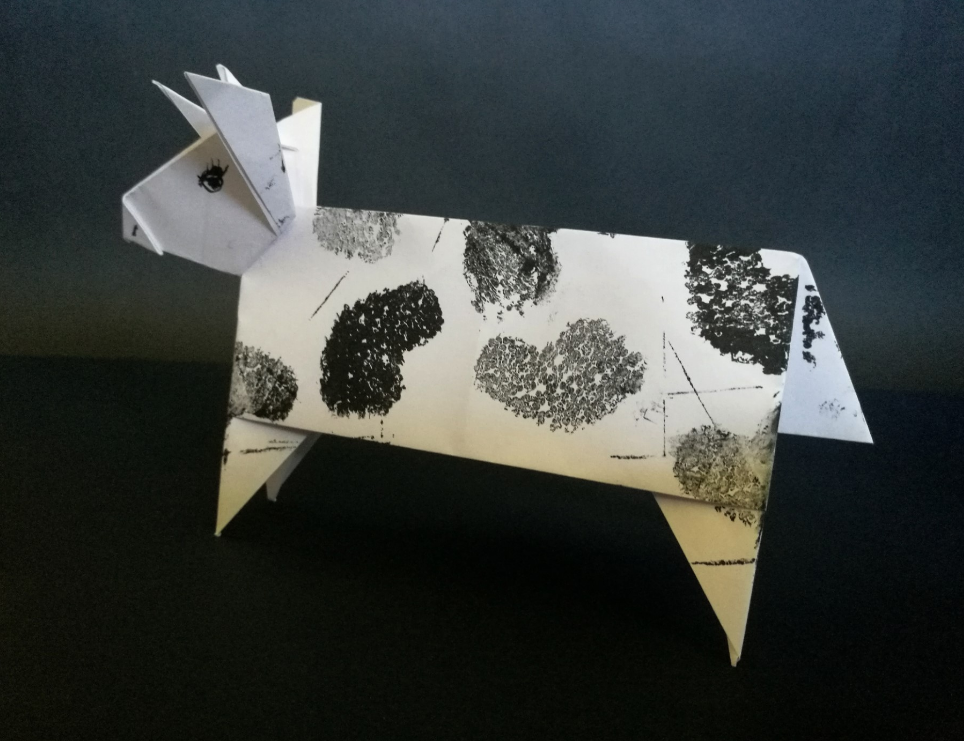
Accompanying each display will be a selection of magic lantern slides. Some feature oxen working on farmland around Falmer, at-moo-spheric scenes of a bygone age.
New magic lantern slides will be available to view when the current ‘What’s in the Box?’ display is refreshed.
